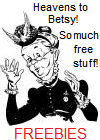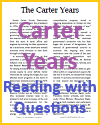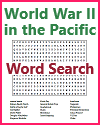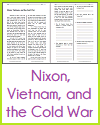| Space Program Reading with Questions |
|---|
| www.studenthandouts.com ↣ American History ↣ American History Readings |
|
During Eisenhower's second term, outer space had become an arena for U.S.-Soviet competition. In 1957, the Soviet Union launched Sputnik—an artificial satellite—thereby demonstrating it could build more powerful rockets than the United States. The United States launched its first satellite, Explorer I, in 1958. But three months after Kennedy became president, the USSR put the first man in orbit. Kennedy responded by committing the United States to land a man on the moon and bring him back "before this decade is out." With Project Mercury in 1962, John Glenn became the first U.S. astronaut to orbit the Earth. After Kennedy's death, President Lyndon Johnson enthusiastically supported the space program. In the mid-1960s, U.S. scientists developed the two-person Gemini spacecraft. Gemini achieved several firsts, including an eight‑day mission in August 1965—the longest space flight at that time—and in November 1966, the first automatically controlled reentry into the Earth's atmosphere. Gemini also accomplished the first manned linkup of two spacecraft in flight as well as the first U.S. walks in space. The three-person Apollo spacecraft achieved Kennedy's goal and demonstrated to the world that the United States had surpassed Soviet capabilities in space. On July 20, 1969, with hundreds of millions of television viewers watching around the world, Neil Armstrong became the first human to walk on the surface of the moon. Other Apollo flights followed, but many Americans began to question the value of manned space flight. In the early 1970s, as other priorities became more pressing, the United States scaled down the space program. Some Apollo missions were scrapped; only one of two proposed Skylab space stations was built. |
 |
    |
|
Directions: Read the text above, then answer the questions below. 1. What became an area for U.S.-Soviet competition during Eisenhower's second term? 2. When did the Soviet Union launch Sputnik? 3. Who was the first U.S. astronaut to orbit the earth, in 1962? 4. Describe the achievements of Gemini spacecraft. 5. Describe the July 20, 1969, achievements of the U.S. space program. 6. What happened to the space program in the 1970s? Click here to print. |
| www.studenthandouts.com ↣ American History ↣ American History Readings |








